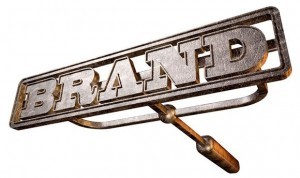What is a Brand and what defines it?
 First and foremost, the design of the logo is perhaps surprisingly at the end of the process. A brand is so much more than just a logo and in many cases when looking at the strategic direction a business could take, the brand is right at the heart of the decision making process. Before committing to the design of a logo it’s important to know what it should say about your company, its products and services. Try to put yourself in the mind of the customer to understand how they will view your brand and its identity, as once this has been determined then you’re well on the way to developing your brand strategy. Don’t forget branding also includes how you and your staff look and behave. So you see, your brand and how it is presented is perhaps one of the most important decisions your business will ever make.
First and foremost, the design of the logo is perhaps surprisingly at the end of the process. A brand is so much more than just a logo and in many cases when looking at the strategic direction a business could take, the brand is right at the heart of the decision making process. Before committing to the design of a logo it’s important to know what it should say about your company, its products and services. Try to put yourself in the mind of the customer to understand how they will view your brand and its identity, as once this has been determined then you’re well on the way to developing your brand strategy. Don’t forget branding also includes how you and your staff look and behave. So you see, your brand and how it is presented is perhaps one of the most important decisions your business will ever make.
So your brand is a statement about the values that your company or product stands for.
It is defined by the target audience it’s addressing, so your customers.
Concept to Completion



Brand development is a long drawn out expensive process.
Not really, it can and should be relatively swift. Provided you have a clear picture of your target audience and what their key triggers are, then it can in fact be quite quick.
Once you have developed your brand you can’t change it.
Not true, there are many instances of companies who have changed their company or product brand and logo. However, it should only be done where there are clear sound reasons for doing so, it can be quite costly but it can also reap great rewards. Repositioning your brand can open up new markets and/or new target audiences.
Only large corporate organisations invest in brand development.
Most large organisations started life small. It was because they chose to invest in developing their brand that they became the successful companies they are today.
Only large companies can afford it.
This is not necessarily the case; price is always relative to the aspirations of the organisation. A clear strategy for growth will by definition require a brand development aspect for it to achieve success.
It’s only relevant to those companies working in the B2C markets.
Again, not true. Almost all B2B market sectors have instantly recognisable brands within their own business community.
